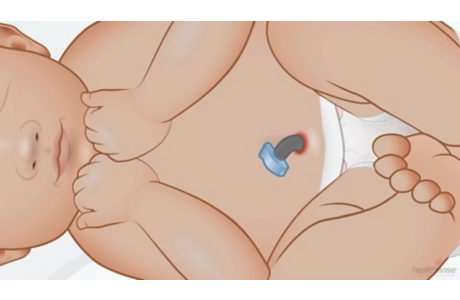Bowel Movements in Babies
Topic Overview
How often do newborns have bowel movements?
You may be surprised at the number of diapers your newborn goes through every day.
Many newborns have at least 1 or 2 bowel movements a day. By the end of the first week, your baby may have as many as 5 to 10 a day. Your baby may pass a stool after each feeding. The number of bowel movements may go down as your baby eats more and matures during that first month.
By 6 weeks of age, your baby may not have a bowel movement every day. This usually isn’t a problem as long as your baby seems comfortable and is healthy and growing, and as long as the stools aren’t hard.
What will the bowel movements look like?
Your newborn baby’s bowel movements (also called “stools”) can change a lot in the days, weeks, and months after birth. The stools can come in many different colors and textures—all of which may be perfectly normal for your child.
- The first stool your baby passes is thick, greenish black, and sticky. It’s called meconium.
- The stools usually change from this thick, greenish black to green in the first few days. They’ll change to yellow or yellowish brown by the end of the first week.
- The stools of breastfed babies tend to be more yellow than those of formula-fed babies. They may also be seedy-looking.
- It’s normal for your baby’s stool to be runny or pasty, especially if he or she is breastfed.
How do bowel movements change as your baby grows?
As your baby grows and begins eating solid foods, you may notice changes in your baby’s stool.
- When you formula-feed or breastfeed, the stool can range from soft to loose or even runny.
- When you start to give your baby solid foods, the stools will become firmer and may have a stronger odor.
- If food is not strained, you may see pieces of food in the stool.
Stool color
Many parents worry about stool color. But most color changes are caused by food coloring or additives to food and not a serious problem. When you notice a color change, think about what your baby has been eating.
- Brown, tan, yellow, and green are all normal colors for a baby’s stool. Green stools could be caused by green vegetables or green gelatin.
- Black or red stool can mean bleeding in the intestine, but it can also be caused by beets, tomato juice or soup, or red gelatin.
- A white stool could mean a liver problem. It could also be caused by medicines or a diet of milk only.
What should you watch for?
Your newborn’s soiled diapers can give you clues about your baby’s health.
Because a baby’s stool does change a lot, it can be hard to know if your baby may have a problem. In general:
- A hard or dry stool could mean that your baby is not getting enough liquids or that your baby is losing liquids because of a fever or other illness.
- An increase in the number of bowel movements or a lot of liquid in stools could be a sign of diarrhea.
- Explosive diarrhea may be a sign of infection with a virus or bacteria. Diarrhea is usually caused by a virus, and medicines don’t help. Diarrhea may cause a loss of fluid (dehydration).
When should you call your doctor?
Call your doctor or get medical help right away if:
- Your baby has new symptoms such as vomiting.
- Your baby’s stools are:
- Maroon or very bloody.
- Black (and your baby has already passed meconium).
- White or gray.
- Your child is having a lot more stools than normal for him or her.
- Your baby’s stool has large amounts of mucus or water in it.
Contact your doctor if:
- Your baby’s stools are hard, or he or she strains to pass stool.
Current as of: December 12, 2018
Author: Healthwise Staff
Medical Review:Susan C. Kim MD – Pediatrics & Kathleen Romito MD – Family Medicine & John Pope MD – Pediatrics
This information does not replace the advice of a doctor. Healthwise, Incorporated, disclaims any warranty or liability for your use of this information. Your use of this information means that you agree to the Terms of Use. Learn how we develop our content.






